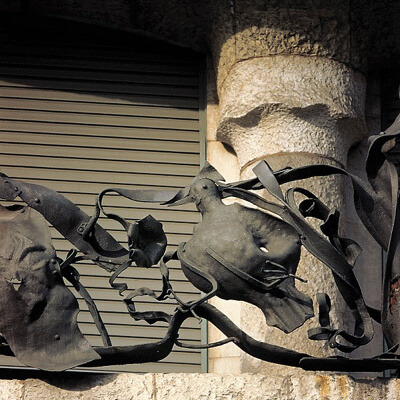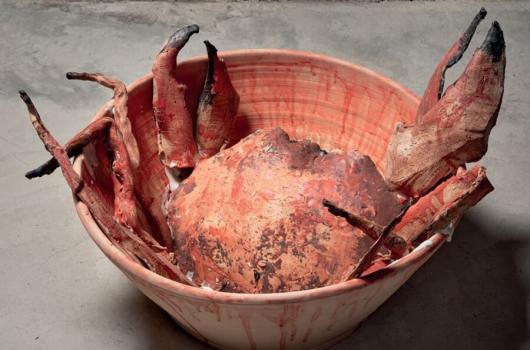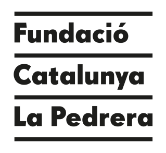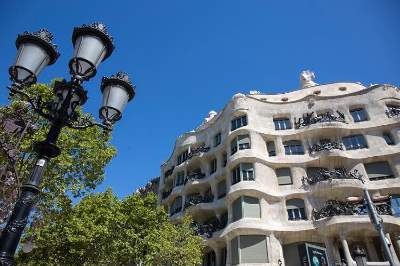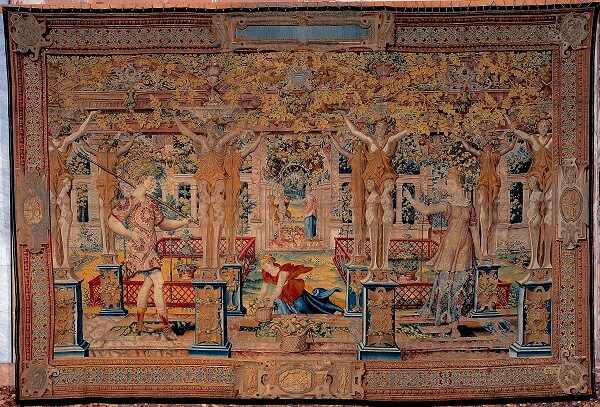
As we go through the wrought-iron and glass door of the building, we are greeted by the remarkable paintings on the walls and ceilings of the entrance halls, which are an essential part of La Pedrera’s decoration. Thanks to recent research, we can now identify the people who produced them, as well as the scenes depicted.
The Symbolist painter Aleix Clapés (1850-1920) was given the task of overseeing the pictorial decoration of La Pedrera, which, in the entrance halls, consists of paintings that reproduce tapestries on myths and legends held in the National Heritage Collection.
The technique employed to produce these paintings in “soft diapered colours” involved transposing photos of black and white prints that Clapés had of the tapestries in the Royal Heritage Collection. Diapering is a technique associated with objects decorated in very bright colours, applied to form leaf motifs, and is used in heraldry. It is a technique that produces striking results but demands tremendous discipline and dedication.
Clapés used cartoons and a grid that he himself traced and gradually transferred the designs onto the walls. The various scenes were painted in oils. In this work, he was assisted by the noted painters Iu Pascual, Xavier Nogués and Teresa Lostau, who at that time were still up-and-coming artists.
The god Pan playing the syrinx at La Pedrera
In the tapestries reproduced in the Passeig de Gràcia courtyard, we find a depiction of Pan and Syrinx in the context of the Roman legend of the gods Vertumnus and Pomona.
In Greek mythology, Syrinx was a nymph who liked to hunt using a bow and arrow. Pan, the god of shepherds and flocks, came across her one day and fell in love with her. He pursued her ardently until eventually the nymph threw herself into the river. There she called on her sister nymphs to come to her aid and they, moved by her plight, turned her into a hollow river reed.
When Pan reached the scene, the only thing he could do was embrace the reeds swaying in the wind. The sound they made pleased him so much that he decided to use them to make a new musical instrument. And this is how he created the syrinx, named in memory of the nymph.
The tapestry renders this story in a concise manner: “Pan playing the flute made of seven reeds and, next to him, Syrinx rejecting him with her raised arm”. Pan is portrayed as half man, half beast, with two horns on his forehead and a hairy body. His lower limbs are those of a goat: his feet have hooves and his legs are strong and wiry.
In this striking way, the god Pan welcomes us by playing the syrinx amid the spectacular and lavish architectural gardens that provide the setting for the story of the love of Vertumnus and Pomona.
What better way to come to work, visit or enjoy the activities in La Pedrera than being accompanied by gods and goddesses, nymphs and lush gardens.
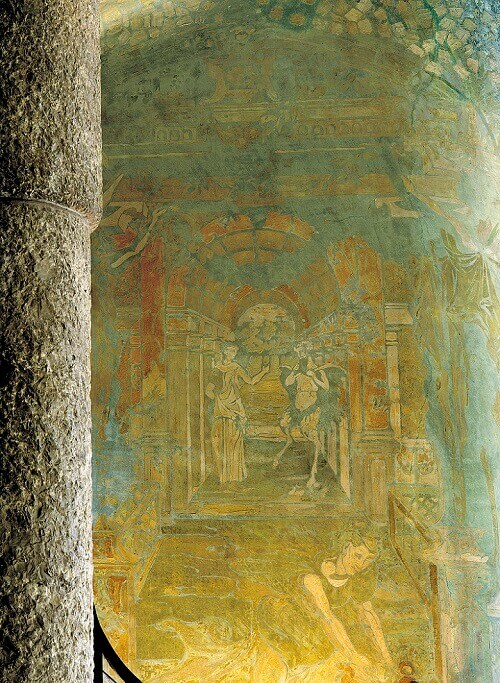 |


.jpg)
